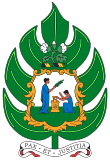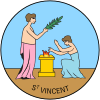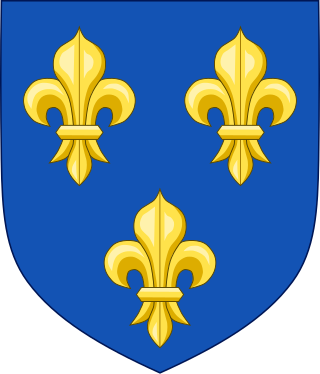
The fleur-de-lis, also spelled fleur-de-lys, is a common heraldic charge in the shape of a lily. Most notably, the fleur-de-lis is depicted on the traditional coat of arms of France that was used from the High Middle Ages until the French Revolution in 1792, and then again in brief periods in the 19th century. This design still represents France and the House of Bourbon in the form of marshalling in the arms of Spain, Quebec and Canada, for example.

The coat of arms of the Philippines features the eight-rayed sun of the Philippines with each ray representing the eight provinces which were placed under martial law by Governor-General Ramón Blanco Sr. during the Philippine Revolution, and the three five-pointed stars representing the three major island groups of Luzon, the Visayas, and Mindanao.
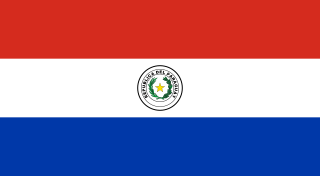
The flag of Paraguay was first adopted in 1842. Its design, a red–white–blue triband, was inspired by the colours of the French Tricolour, believed to signify independence and liberty. The flag is unusual because it differs on its obverse and reverse sides: the obverse of the flag shows the national coat of arms, and the reverse shows the seal of the treasury. It is one of only three national flags worldwide which bears this feature, the others being from Moldova and Saudi Arabia. The flag consists of the same three horizontal colours as the flag of the Netherlands, which in turn was the inspiration for the French flag. It was revised in 2013 to bring the flag towards its original design. It has a ratio of 11:20.

The flag of Saint Vincent and the Grenadines is a Canadian pale triband consisting of blue, gold, and green bands charged with three green diamonds at the centre. Adopted in 1985 to replace a similar design used from the time of independence, it has been the flag of Saint Vincent since that year. The design of the present flag entailed substituting the country's coat of arms on a breadfruit leaf with the diamonds. They are a reference to both the letter "V", which is the first letter of the country's name, and its nickname as the "Gems of the Antilles" and "Jewels of the Caribbean". Accordingly, the flag itself has been given the moniker of "The Gems".
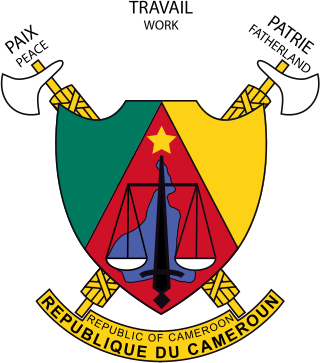
The coat of arms of Cameroon consists of a shield with a banner above and below it. Behind the shield are two crossed fasces. The shield has the same color pattern as the flag of Cameroon, and in the center is a map of the nation. The scales of justice are superimposed on top of the map of the nation since 1984.

The Patriarchal cross is a variant of the Christian cross, the religious symbol of Christianity, and is also known as the Cross of Lorraine. Similar to the familiar Latin cross, the patriarchal cross possesses a smaller crossbar placed above the main one so that both crossbars are near the top. Sometimes the patriarchal cross has a short, slanted crosspiece near its foot. This slanted, lower crosspiece often appears in Byzantine Greek and Eastern European iconography, as well as in other Eastern Orthodox churches. In most renditions of the Cross of Lorraine, the horizontal bars are "graded" with the upper bar being the shorter, though variations with the bars of equal length are also seen.

The coat of arms of Georgia is one of the national symbols of Georgia. The coat of arms is partially based on the medieval arms of the Georgian royal house and features Saint George, the traditional patron saint of Georgia. In addition to St. George, the original proposal included additional heraldic elements found on the royal seal, such as the seamless robe of Jesus, but this was deemed excessively religious and was not incorporated into the final version.
This is a list of coats of arms of the United Kingdom, its constituent parts, Crown Dependencies and its Overseas Territories.

The coat of arms of Portugal is the main heraldic insignia of Portugal. The present model was officially adopted on 30 June 1911, along with the present model of the Flag of Portugal. It is based on the coat of arms used by the Kingdom of Portugal since the Middle Ages. The coat of arms of Portugal is popularly referred as the Quinas.

The coat of arms of Sierra Leone, were developed by the College of Arms and granted in 1960.

The Scout Association of Saint Vincent and the Grenadines is the national Scouting organization of Saint Vincent and the Grenadines. Scouting in Saint Vincent and the Grenadines started in 1911 and became a member of the World Organization of the Scout Movement (WOSM) in 1990. The coeducational association has 549 members.
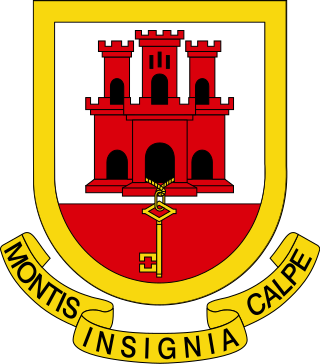
The coat of arms of Gibraltar was first granted by a Royal Warrant passed in Toledo on 10 July 1502 by Isabella I of Castile during Gibraltar's Spanish period. The arms consists of an escutcheon and features a three-towered red castle under which hangs a golden key.
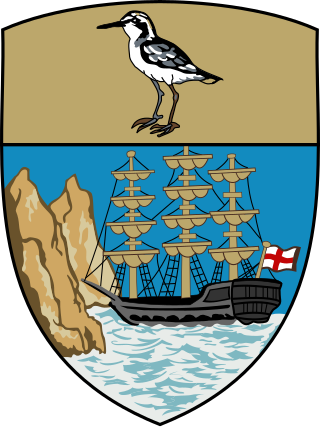
The coat of arms of Saint Helena, part of the British Overseas Territory of Saint Helena, Ascension and Tristan da Cunha, was authorised on 30 January 1984.
The island nation of Malta has a variety of national flags and symbols, some current and some no longer in use.

The Flag of Lisbon, also known as the Flag of Saint Vincent, is the municipal flag of Lisbon, consisting of a gyronny alternating between black and white defaced with the coat of arms of Lisbon in the center. For civil use the flag is flown without the coat of arms.

The coat of arms of Lisbon is the official symbol of the municipality of Lisbon. Dating to the 12th century, it is one of the oldest heraldic symbols of any city in Portugal.

The following outline is provided as an overview of and topical guide to Saint Vincent and the Grenadines:

The coat of arms of Réunion represents the island and overseas departement of Réunion. This coat of arms was created by Émile Merwart in 1925 on the occasion of a colonial exhibition that was to be held in Petite-Île.
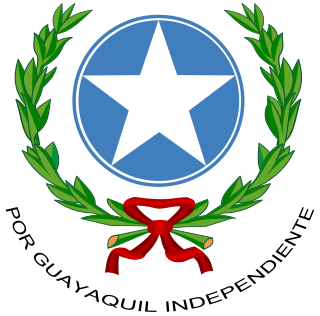
The coat of arms of Guayaquil is used for the Ecuadorian city of Guayaquil. Adopted in 1920, it's composed of a circle in blue with an inscribed silver star. The circumference is surrounded on both sides by two olive branches in the shape of a crown, linked at the bottom by a ribbon of gules. Under the ribbon is the slogan "Por Guayaquil independiente". It usually appears with an oval border in blue, although this is not an official version.

